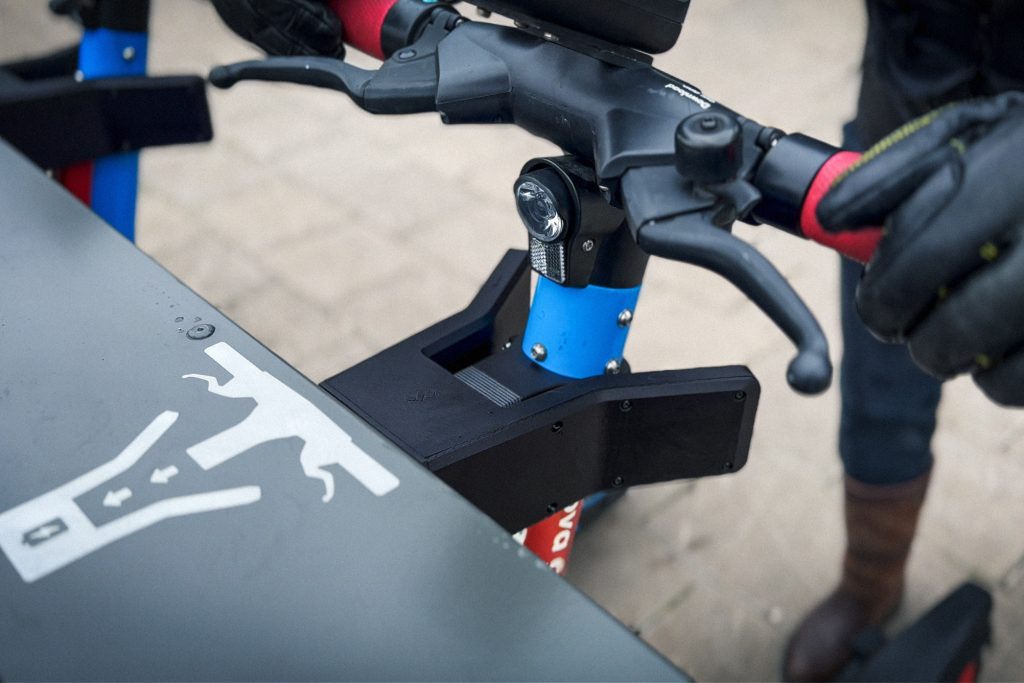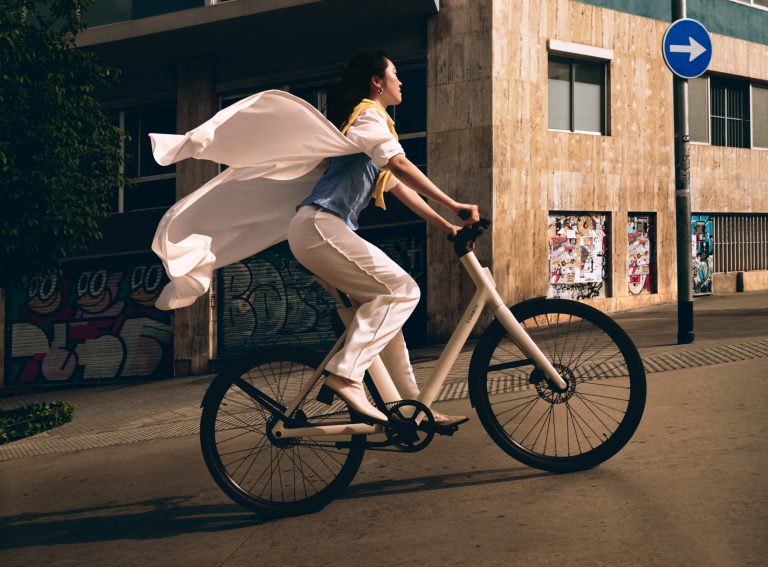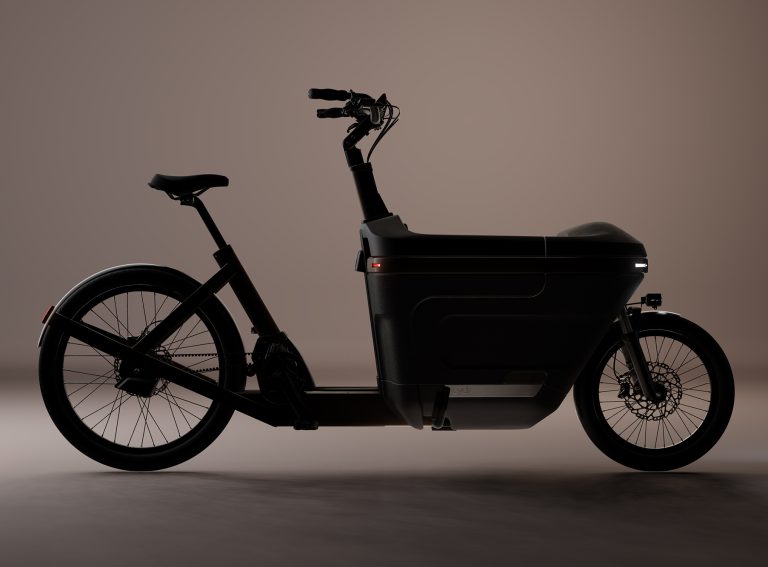Swedish parking infrastructure start-up Standab has designed a micromobility charging stand which eliminates the need for manual battery swaps for e-bikes and e-scooters.
Marma is a parking rack that is equipped with a connector and receptor to charge the vehicles.
The connector is compatible with various models of shared vehicles and a magnetic hold keeps the e-scooter or e-bike in place after the user has parked, with charging starting automatically.
This follows a Stockholm-based pilot programme with shared operator Dott which saw average fleet battery levels increase by 49% as a result of the hardware.
“Operational costs are a huge challenge for the industry,” Standab CEO Marcus Adolfsson told Zag Daily. “And manual battery swapping is behind a lot of those costs.”
Analysing 20 vehicles over a two-week period, the pilot scheme brought the number of battery swaps down from 22 to zero.

Marma aims to align the parking goals of both the cities and the operators. To reduce costs for both parties, Standab will install the hardware at no charge to either party and the operator will only pay for the costs that come from charging.
“There has traditionally been a huge gap in who should be financing the infrastructure for micromobility,” Marcus said. “Cities have said it should be the operators, and the operators have said that if they’re already paying a fee to be on the streets of the city then they should be getting the infrastructure in return.
“This is where we come in. We can offer free infrastructure to the cities and all we need is the land to put it on. For the operators, we’re reducing their operational costs of manually swapping batteries while also offering organised parking and charging. For Standab, we earn from every vehicle that is correctly parked and charging.
“It’s a win win win.”
Using operator end-of-ride data from the last three years, Standab can understand where to focus the installation of its charging stands upon the roll-out. Prioritising high footfall areas is another triple win for the city, operator, and the infrastructure company.
“The operator wants the charging racks in high footfall areas because that’s where they have parking problems, and that’s where most of the scooters will be charged. The cities want it because they need organised parking in these high footfall areas. And Standab wants it because we want high rotation between our charging stands.”
That’s not to forget the user experience either. As riders park their vehicle, the Marma infrastructure will automatically detect that the ride has come to an end and save the user from having to take end-of-ride photos.
With plans to roll out in multiple European cities next year, Marma is the culmination of what Standab has learnt over the years.
“We’ve been creating parking infrastructure for micromobility for almost four years. This parking infrastructure solution comes from everything we have taken on board – how people use our parking racks, how people use scooters and bikes, and how we can offer riders the most efficient way to park.”
Earlier this year, Zag reported that micromobility solution provider Segway has also developed a parking and charging rack called ChargeLock, which is being rolled out by one of America’s biggest bike tour operators.



